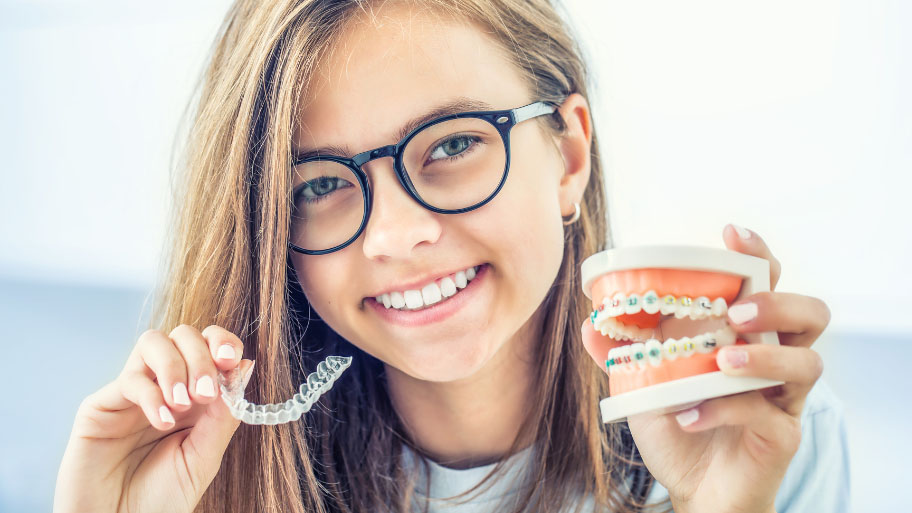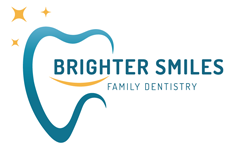
Deciding between Invisalign vs traditional braces isn’t just a matter of preference; it’s about finding the best fit for your smile and lifestyle. You’re likely weighing the options, wondering which will meet your dental goals without disrupting your daily life.
Consulting with an orthodontist is key, as they can pinpoint the treatment that aligns with your dental needs. Invisalign, known for its stealth and flexibility, might be perfect for straightforward adjustments. However, for more complex dental shifts, traditional braces, with their robust design, often take the lead.
In this guide, we’ll dive into the nuances of Invisalign and traditional braces, shedding light on their benefits and drawbacks. From the discreet charm of Invisalign’s clear aligners to the steadfast efficiency of traditional braces, we’ll help you navigate through your orthodontic choices.
Our goal is to arm you with the information needed to make a confident decision for your orthodontic journey, ensuring you stride towards a healthier, happier, brighter smile.
Quick Comparison: Invisalign vs Traditional Braces
In your journey to a perfect smile, understanding the key differences between Invisalign and traditional braces is crucial. Here’s a quick glance at how these two popular treatments stack up:
Choosing between Invisalign and traditional braces hinges on your specific dental needs, lifestyle preferences, and the results you’re aiming for. Stick with us as we delve deeper into each option, helping you chart the course to your ideal orthodontic solution.
Understanding Invisalign and Traditional Braces
Delving into the world of orthodontics, let’s get to the heart of what Invisalign and traditional braces entail, guiding you through their distinctive paths.
What is Invisalign?

Invisalign, the pioneer of clear aligner therapy, revolutionized orthodontic treatment by offering an invisible way to straighten teeth. These custom-fitted aligners are crafted from a proprietary, transparent material that gently shifts your teeth into place.
The sleek design not only caters to aesthetic preferences but also offers a level of discretion for those wanting to avoid the ‘metal mouth’ stigma associated with braces.
How Invisalign Works
Your journey with Invisalign starts with a digital mouth scan, leading to a set of aligners that fit your dental structure. Each aligner, worn for about two weeks, nudges your teeth towards their ideal alignment, blending seamlessly into your daily life without the dietary or maintenance hassles of braces.
What are Traditional Braces?

Traditional braces, with their robust metal or ceramic brackets, have stood the test of time, offering a reliable solution for comprehensive orthodontic adjustments. These braces tackle everything from minor gaps to complex dental alignments, making no tooth movement too challenging.
How Traditional Braces Work
The orthodontist adjusts the braces periodically, tightening the wires to guide teeth into their correct positions. This constant pressure is what gradually aligns the teeth and jaw over time. Traditional braces are non-removable, staying on until the treatment is complete, which can span several months to a few years, depending on the complexity of the case.
Pros and Cons of Each Treatment
After exploring what Invisalign and traditional braces are about, let’s weigh deeper into their strengths and weaknesses to help you lean toward the treatment that resonates with your needs.
Advantages of Invisalign
Disadvantages of Invisalign
Advantages of Traditional Braces
Disadvantages of Traditional Braces
Understanding these pros and cons sheds light on the practical aspects of each treatment option. While Invisalign offers convenience and aesthetics, traditional braces stand out for their robustness and wide-ranging corrective capabilities.
Reflecting on these points, consider how each treatment aligns with your lifestyle, cosmetic preferences, and orthodontic needs, guiding you closer to the choice that will best shape your future smile.
Choosing the Right Option for You
Now that we’ve navigated the specifics of Invisalign and traditional braces, it’s time to zoom in on what really matters: selecting the treatment that aligns with your personal needs and lifestyle. Here’s how to make that crucial decision:
Factors to Consider:
Making an Informed Decision
Choosing between Invisalign and traditional braces is a significant decision that affects not just your smile but your overall quality of life. By considering these factors and seeking professional advice, you’re well on your way to making a choice that suits your dental health needs, lifestyle preferences, and personal values, ensuring a journey to a smile that you’ll love and cherish.
Alternatives and Innovations in Orthodontic Treatments
As you consider the best path to your ideal smile, remember that the orthodontic world is rich with alternatives and innovations beyond Invisalign and traditional braces. Let’s explore some other options that might be the perfect match for your smile journey, all of which are available through our clinic:
Considering Your Options
Your Next Steps
If these alternatives spark your interest, we invite you to discuss them with our team. Our clinic is equipped with the latest in orthodontic technology, and we’re committed to finding the solution that not only meets your dental needs but also fits seamlessly into your life. Together, we can explore these options and tailor a treatment plan that paves the way to the smile you’ve always wanted. your gums at risk:
Your Path to a Brighter Smile: Next Steps and Recommendations
As we wrap up our exploration of orthodontic options, it’s clear that the journey to a perfect smile is both exciting and nuanced. Whether you’re drawn to the discreet elegance of Invisalign, the dependable strength of traditional braces, or the innovative alternatives like clear ceramic braces, lingual braces, or self-ligating braces, the key is choosing a path that aligns with your personal needs, lifestyle, and aesthetic preferences.
Key Points to Remember
Recommendations for Moving Forward
Take the Next Step with Brighter Smiles Family Dentistry
Thinking about a brighter, healthier smile? Let Brighter Smiles Family Dentistry guide you to it. We specialize in custom care that fits perfectly with your dental health goals and lifestyle. Check out our services on our website and book your consultation to kickstart your journey to an amazing smile. We’re here to support you every step of the way, ensuring you achieve a smile that dazzles and lasts.
Step into a future where your smile is at its best with righter Smiles Family Dentistry by your side. We can’t wait to discover the perfect orthodontic solution with you, promising a smile that’s not just beautiful on the outside, but healthy and thriving on the inside.

About the Author
Brighter Smiles Family Dentistry, led by Dr. Melani Fulton, upholds a legacy of exceptional dental care in West Des Moines, IA. Dr. Fulton, a University of Iowa College of Dentistry alumna, specializes in family dentistry and orthodontics. She succeeded Dr. Dan Todd in 2021, continuing a tradition of patient-centered, high-quality dentistry. Committed to gentle, modern treatments, Dr. Fulton’s approach is deeply rooted in community values, ensuring every patient feels like family at Brighter Smiles.
